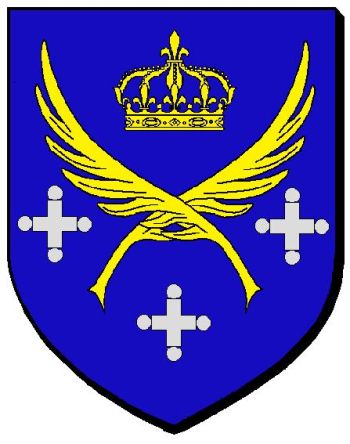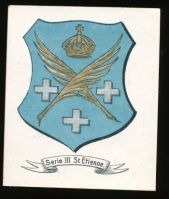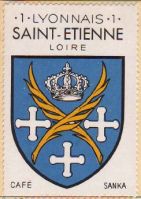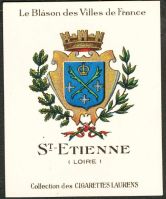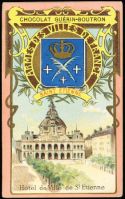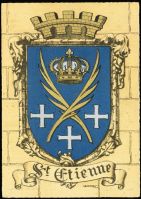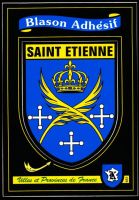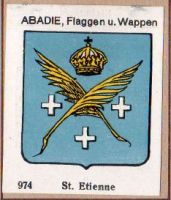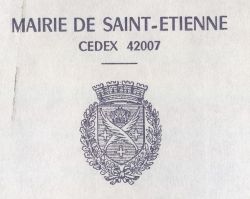Saint-Étienne: Difference between revisions
Knorrepoes (talk | contribs) m (Text replacement - "'''Country''' : France [[File:france-flag.gif|" to "'''Country''' : France [[File:France.jpg|") |
Knorrepoes (talk | contribs) m (Text replacement - "{{fr}}" to "") |
||
| Line 10: | Line 10: | ||
|} | |} | ||
{| class="wikitable" | {| class="wikitable" | ||
Revision as of 07:39, 27 December 2022
|
Country : France Département : Loire Additions: |
| French | D'azur à deux palmes d'or passées en sautoir et cantonnées d'une couronne fermée d'or en chef et de trois croisettes pommetées [pierrées] d'argent en flancs et en pointe. |
| English | No blazon/translation known. Please click here to send your (heraldic !) blazon or translation |
Origin/meaning
The arms are known since 1667.
The palms and the crosses with little stones at their tips evoke the martyr of Saint-Stephen (Etienne in French), one of the first Christian martyrs, who was stoned to death in Jerusalem.
The royal crown express the will of the population, who wanted to be placed under the influence of the king, and no more of the lord of St Priest, whose arms were " five points or and four points azure"
The arms were borne unchanged since this date, although they were replaced for a short time during the French revolution and the Napoleonic era.
The arms in the Wappen-Sammlung (+/- 1910)
The arms in the Continentale Verlags-Anstalt album, +/- 1910
The arms in the Café Sanka album +/- 1932
The arms on a tobacco card by Laurens
The arms on a trade card
The arms on a Barré Dayez Postcard
The arms on a postcard by Kroma
The arms in the Abadie albums, 1930s
Literature: J.J. Armorial Général des communes de France, Paris, 1995; Background provided by Thierry MURON <thierry.muron@wanadoo.fr>.
